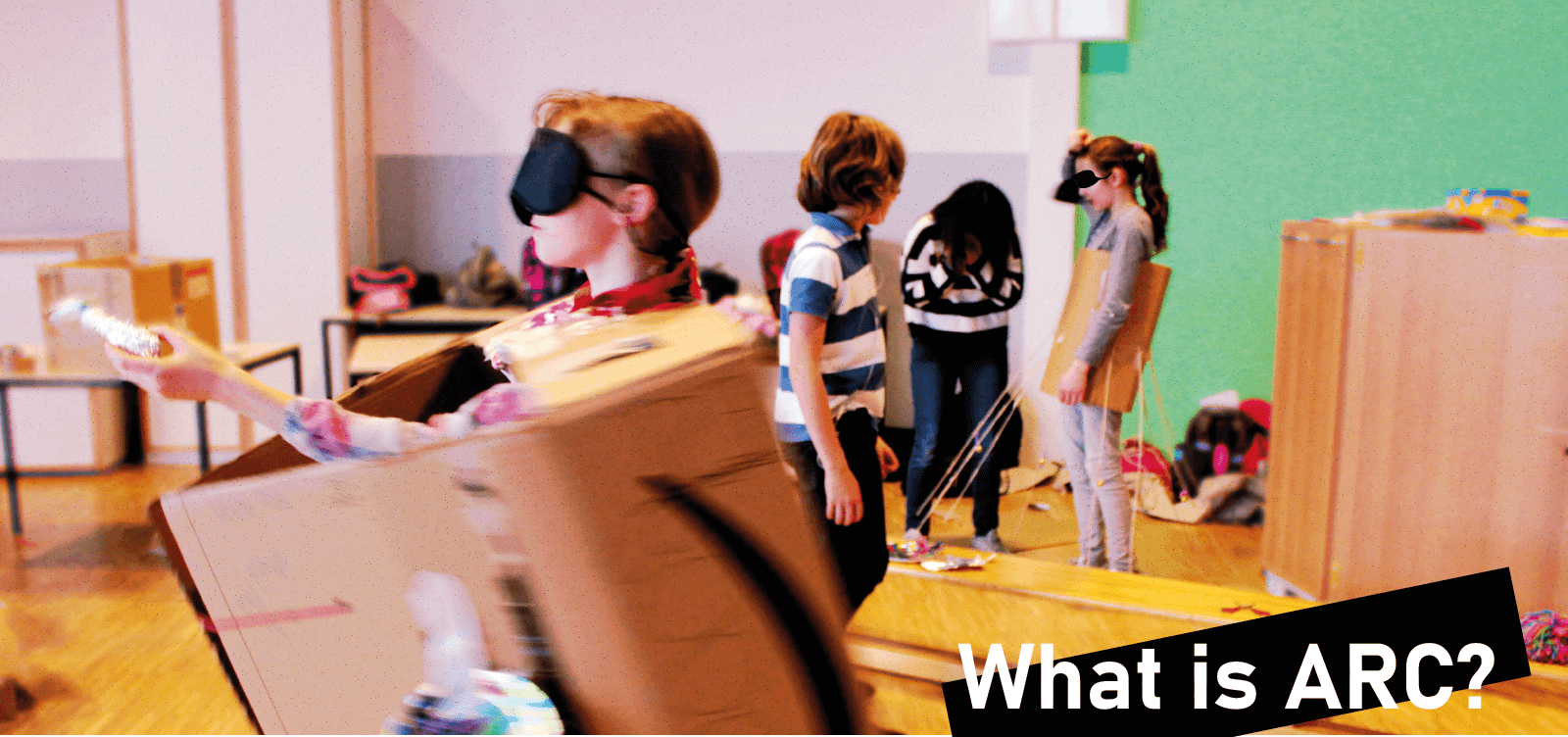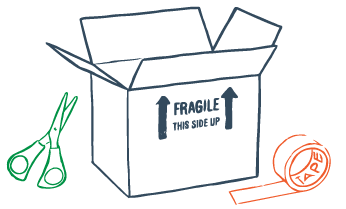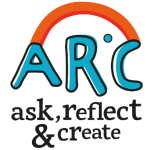
ARC / Ask, Reflect, Create is a new teaching method which invites children to reflect, think and create through the use of very simple, illustrated questions relating to real-world problems, like those consigned on the 17 Sustainable Development Goals of the United Nations. This method promotes empathy and both, critical and creative thinking, qualities which are vital for children who will be facing the great challenges of the future.
Our long-term goal is to make this method accessible to school teachers anywhere in the world and thus contribute to a more daily exercise of creativity in childhood.
* The activities of this method are intended for classroom use but can be adapted for homeschooling.
Summary of ARC

The Method
It is a 5-stage method with creative activities for children between 6 and 12 years of age.What does it do?
It encourages creativity, problem-recognition, and problem-solving abilities by providing real-world challenges.
Themes
It uses themes primarily related to the 17 Sustainable Development Goals of the United Nations.
Duration
(in the schools) The 5 stages of an ARC activity require at least 2 hours for completion. An activity can also be divided into several sessions.
Resources
The material provided consists of original illustrations and guides, which serve as a means of communication between teachers and children.Information
There is no need to search for additional information from outside sources to solve the problems.
Prototypes
Basic supplies such as cardboard, tape, scissors, and other recycled materials are required to create prototypes.
Presentation
The presentation of results at the end of each activity is essential. In our method, the process is much more important than the result.

The Method
It is a 5-stage method with creative activities for children between 6 and 12 years of age.What does it do?
It encourages creativity, problem-recognition, and problem-solving abilities by providing real-world challenges.

Themes
It uses themes primarily related to the 17 Sustainable Development Goals of the United Nations.
Duration
(in the schools) The 5 stages of an ARC Project require at least 2 hours for completion. The project can also be divided into several sessions.
Resources
The material provided consists of original illustrations and guides, which serve as a means of communication between teachers and children.Information
There is no need to search for additional information from outside sources to solve the problems.
Prototypes
Basic supplies such as cardboard, tape, scissors, and other recycled materials are required to create prototypes.
Presentation
The presentation of results at the end of each activity is essential.
Significant
In our method, the process is much more important than the result.Five stages of the Method
Each ARC activity is carried out with the help of a PDF document which guides the development of the five stages of the method. This includes illustrations, explanatory texts, and two activity guides. Here, we explain what each stage consists of:
Introduction to the theme
The first texts and images are designed to introduce the activity and invite a first dialogue with the children about the topic they will work on. To quickly grab their attention and create interest, the children are asked a very broad question which relates, as much as possible, to a real event that is impacting them.For example, if the theme is about the “sense of sight”, the first question would be: “How do you survive without being able to see?” The real-life event in this case is: “There are more than 45 million people in the world who cannot see or have very limited vision.”
Challenges related to the theme
Continuing on, three illustrations are presented showing examples of very concrete, daily challenges related to the topic. These challenges are a kind that a 6-year-old child can easily understand. In addition, a key question for the activity is posed : “Can you think of other challenges related to this theme? Let’s get to work!To employ this method in a classroom, groups should be formed with a maximum of four children each, and the children should be encouraged to find original or funny names for their groups. In this extraordinary time when children are being taught at home, each individual child can give themselves a funny, crazy or very sophisticated nickname. In the Activity Guide # 1 each child or each group of children writes their team name and the proposed new challenges. This task should be fairly easy to perform as the children already have an example.
Brainstorming
For the third stage, each child or group of children selects a challenge from among those proposed and then begins to search for solutions based on group or individual reflections.Ideas will be drawn and explained in the Activity Guide # 2 Before starting, invite children to be inventors, to propose solutions that do not yet exist. As they are children, all ideas are welcome, however outlandish, mundane, magical or impossible they seem.
Construction of Prototypes
At this stage, one of the proposed ideas is selected as the response to the challenge and a very basic, non-functioning prototype of the idea is constructed. This requires using a large variety of materials. These can be easily found in a recycling bin:Cartons, old boxes, plastic containers of various shapes, Lego pieces, old toys, bottle caps, wooden sticks or toothpicks, aluminum foil, egg boxes, cardboard rolls, old CDs or VHSs, newspapers, magazines, clips, ropes, screws and other valuable materials for this activity that we all surely have at home. Collecting the materials in advance is recommended. In addition, it is important to have scissors and tape handy. (This is the easiest and fastest way to join the parts of the prototypes.)
* Children may decide to make something that has nothing to do with the initial idea, which is not a problem. Any engagement fulfills the objective of the activity, which is to get children to create.
* Children can be real perfectionists! Sometimes it is important to remind them that this is just a model, a prototype that does not have to be perfect or functional.Presentation of results
Finally, each group presents their ideas and prototypes to the other classmates. This moment is particularly important as it is the perfect time for children to ask each other questions, and to reflect on the topic based on the ideas they have shared. It is also an opportunity to improve communication skills, as well as to develop concepts of listening and socializing. In addition, children learn experientially to value and defend their own points of view and to respect and value those of others. It is also an opportunity for teachers to get to know their students better. The topics covered in the activity can be deepened in later lessons. An interesting exercise may be repeating the activity, once the children have acquired new knowledge and a broader view of the subject.In the case of individual exercises at home, the child presents his ideas and processes to his parents or companions. If they wish, they can also share photos of the results on our social network. This activity is also an opportunity for parents to discover or rediscover their children’s great creative skills.
